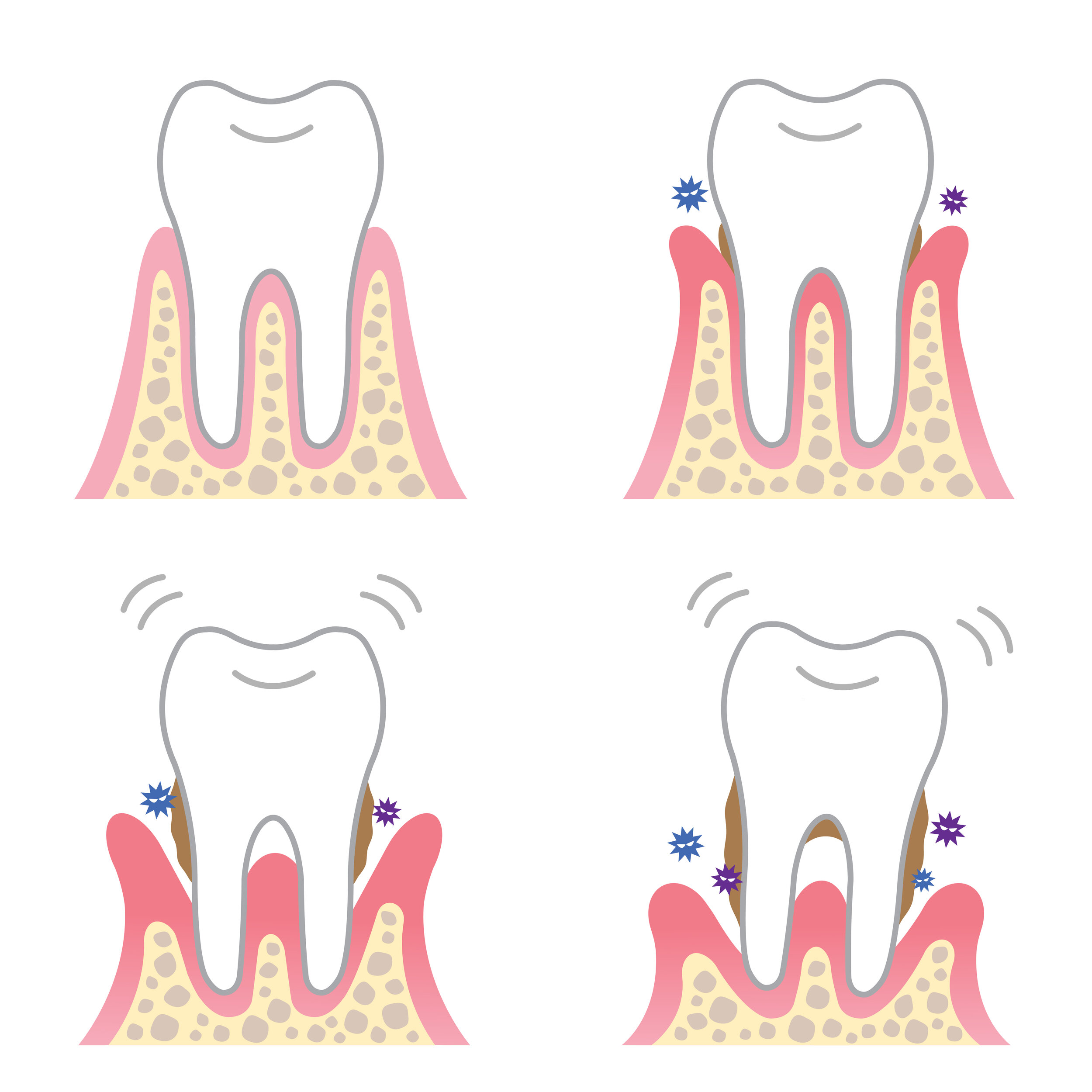What is Flap Surgery and Bone Grafting?
Invasive procedures, like flap surgery and bone grafting, are never your dentist’s first choice.
Between brushing, flossing and regular dental visits, the front line for protecting your oral health is straightforward and pain-free. For most people, these simple solutions will keep you from ever needing the above, invasive procedures.
However, when the above trifecta of protection is ignored, or other health issues compound problems, oral care and dentistry becomes much more involved. When plaque is allowed to flourish, it creates all kinds of problems that will eventually lead to sensitivity, pain and even tooth loss.
This process is referred to as periodontitis.
When left too long, it creates problems that require more help than brushing, flossing or even in-depth dental cleaning can provide. At that point, a dentist may turn to flap surgery and bone grafting.
Fighting advanced periodontitis
When bacteria begin to proliferate in the mouth, they find all kinds of places to hide. This causes inflammation, which, if left too long, results in gum tissue pulling away from the tooth, creating pockets where more bacteria hide.
The first step to treating periodontal pockets is through cleaning and scaling in the dentist’s office. But, once these pockets grow deep enough, they become impossible to clean, even with specialty dental tools. The pockets also open a route for invasive bacteria to attack the bone and ligaments of the jaw.
Symptoms of advanced periodontitis include:
Tooth sensitivity
Loose adult teeth
Severe gum recession
Tooth loss
Persistent halitosis (or bad breath)
Gum pockets
Once periodontitis has advanced beyond the reach of cleaning and scaling tools, the only answer is flap surgery and, possibly, bone grafting. If you are experiencing signs and symptoms of periodontitis, it’s important to seek treatment from an expert Lethbridge dentist as soon as possible. flap surgery and bone grafting are two common treatments for advanced periodontitis
What is flap surgery?
If bacteria have made a home way down deep in a periodontal pocket, the only way to properly clean them out is to cut into the gums and open the pocket up.
Once opened, the dentist can get at the root of the problem and thoroughly clean the tooth and gums. After the area is cleaned, the pocket can be closed once again. And, because the pocket is clean, it can begin to heal and re-attach itself to the tooth.
However, if the infection has spread too far, it may have affected the bones of your jaw. If that’s the case, your dentist will have to perform a bone graft.
What is a bone graft?
When bacteria gets down into the roots of teeth, it can infect bone and cause decay in the tissue. This is how periodontitis causes loosening of the teeth.
If there is bone loss, no amount of cleaning will save the teeth. In fact, the gum will just end up growing into the space where there used to be bone, leaving the tooth nothing to root into. This will, eventually, result in the loss of the tooth.
To combat this, dentists replace lost or damaged bone with new bone – either manufactured bone, or tissue harvested from the patient or a secondary patient. The living bone will then fuse with the grafted bone, adding strength back into the jaw.
Fighting gingivitis to avoid surgery
Neither of these procedures is pleasant, and both require some days of rest for your mouth. The good news is both flap surgery and bone grafts are easy to avoid.
By maintaining proper brushing and flossing techniques, alongside regular dental visits, you can keep gingivitis and periodontitis at bay. If you suffer from loose teeth, gum sensitivity or bleeding, contact your dentist today to be proactive about your dental health.
At our dental clinic in Lethbridge, Canada, we offer both of these treatments and more to help restore your oral health. If you would like more information or would like to book an appointment, please call us at 403-381-1155 today.

